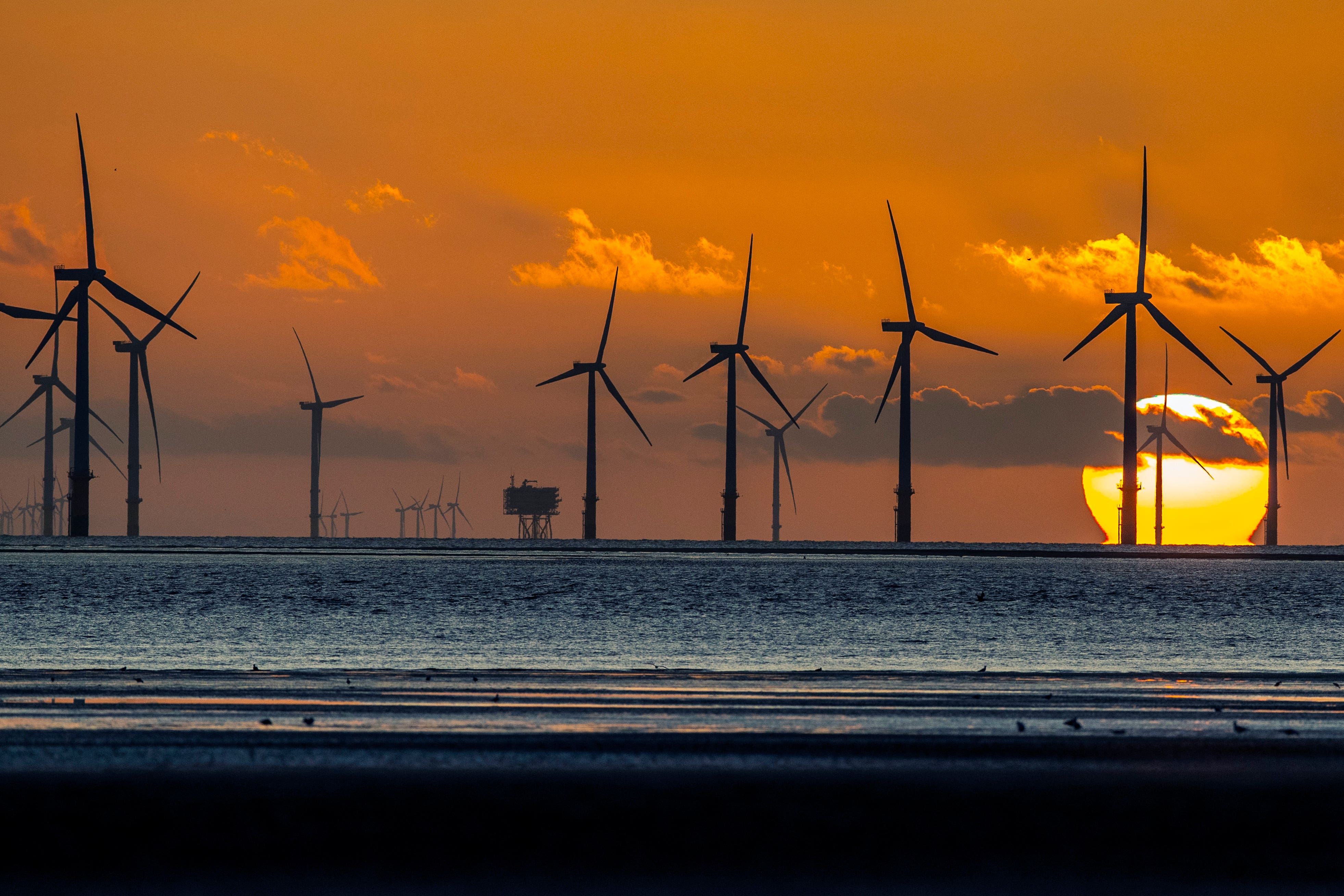
For free real time breaking news alerts sent straight to your inbox sign up to our breaking news emails
Sign up to our free breaking news emails
Sign up to our free breaking news emails
I would like to be emailed about offers, events and updates from The Independent. Read our privacy policy
Renewable electricity production will surpass power generated from fossil fuels for a full year for the first time, according to a think tank.
While particularly windy periods have meant certain days in the last few years have been dominated by renewable power as turbines lit up the grid, this is the first time through an entire calendar year that renewable energy will be greater than power generated from burning oil, gas and coal.
The shift is driven largely by a decline in production from coal, gas and oil, as well as growing wind, solar and biomass power, according to think tank Ember.
Britain’s last coal-fired power station, at Ratcliffe-on-Soar, was closed this year, helping slash emissions and ending the UK’s 142-year reliance on the fuel.
Wind, solar and hydropower will contribute 37 per cent of UK electricity this year compared to 35 per cent from fossil fuels - mainly natural gas - with nuclear and biofuels making up the rest.

Just three years ago, fossil fuels generated 46 per cent of electricity, with only 27 per cent for renewables. In 2000, about three-quarters of electricity was generated by fossil fuels, with most of the remainder coming from a larger nuclear industry.
There was a 23 per cent increase in onshore wind generation in the first nine months of the year. Onshore wind is much cheaper to install and maintain once planning permission has been won.
“The lifting of the de facto onshore wind ban in July 2024 is expected to lead to an increased deployment rate in the near-medium term in England, as part of the progression towards a clean power system in 2030,” the analysis says.
Offshore wind has had a “slower year”, it said, although there are plenty of very large projects which will be completed in the coming years and add 3.8 gigawatts of power to the UK’s 75 gigawatts of capacity.
“The renewables future is here,” said Frankie Mayo, an analyst at Ember. “This long-awaited milestone is a testament to how much progress the UK has made. It’s time to seize the moment, to cut reliance on expensive gas with new renewables, storage, and grid upgrades. With the phase-out of coal power completed this year, reducing gas use is the next big opportunity for the country.”
Another driver has been electricity imports. Neighbours like France, with its huge fleet of nuclear power stations, offer cheaper power generation and the UK can buy its power via undersea cables.
The report said: “Several factors, including increased renewables, low electricity demand and higher net power imports came together to help reduce fossil fuel use in recent years. In the years to come, electrification is expected to contribute to increasing electricity demand.
“However, overall the direction of travel is clear, expensive gas power is targeted to decline to below 5 per cent of total generation by 2030 in line with clean power targets, down from 30 per cent in 2024.”

 By The Independent (Business) | Created at 2024-12-10 16:03:20 | Updated at 2024-12-22 16:07:16
1 week ago
By The Independent (Business) | Created at 2024-12-10 16:03:20 | Updated at 2024-12-22 16:07:16
1 week ago





